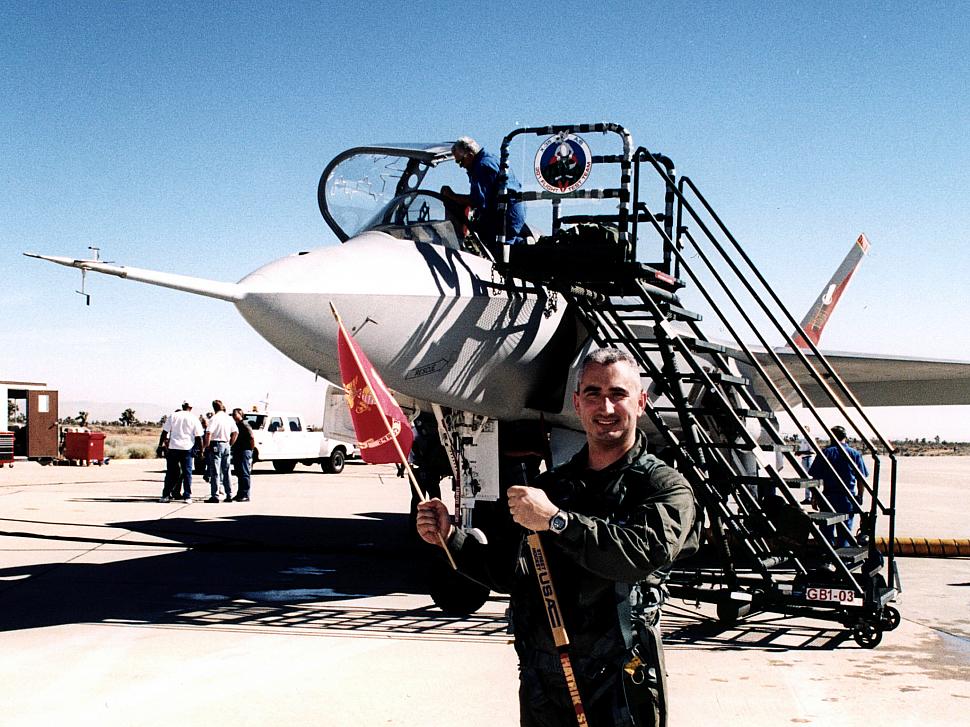“Turbo” Tomassetti Reflects on the Future of the F-35: And Looks Back at the Past Thirty Years
This week’s interview of the week goes back to a discussion with a founding member of the USMC F-35 community and indeed for the F-35 overall and we are republishing the interview we first did in 2013, or six years ago.
2013-06-18 Colonel “Turbo” Tomassetti is retiring after a distinguished 30-year career as a USMC aviator.
To both honor and to learn from “Turbo,” Second Line of Defense travelled to the 33rd Fighter Wing, where “Turbo” retired as Vice Commander.
In this piece, we are focusing on the video portion of the interview, where “Turbo” provides an overview of his time at Eglin and the future of the F-35.

In the video portion of the interview, “Turbo” looked forward to the coming of the F-35B to the USMC, and backwards at his career. He contrasted his experience with the Harrier and the F-35B and then discussed various aspects of change associated with the coming of the F-35 to the joint force.
“Turbo” Tomassetti Reflects on the Future of the F-35 from SldInfo.com on Vimeo.
The shift in pilot culture was a key theme as well as understanding the impact of the coming fleet of F-35s to the joint and coalition force.
Col. Tomassetti underscored as well the important role which the F-3B is bringing to the USMC expeditionary approach.
“What does that airplane bring to the Marine on the ground? It means that the warrior has access to information that they would not normally have. And the F-35B is about bringing that aircraft up close in the battlespace and it can operate off of a variety of platforms to allow for operational flexibility.”
He contrasted his experiences with the Harrier and the F-35B and highlighted the impact of the digital capabilities and information dominance, which the F-35b will bring to the USMC. He also emphasized that his commitment to the development of the aircraft try was founded on trying to ensure that the plane would be easy to fly, unlike the Harrier and to do so for the safety and security of the pilot.
He reflected back on the contrast between his involvement in the prototype phase of the F-35 and what is on the flight line currently. “We really did not conceptualize the data fusion capability and its impact. We had some ideas in briefing slides and graphics, but now it is entering reality on the flight line.”
The Osprey has had an important impact on the USMC in shaping cultural change within the USMC overall. The F-35B and its cultural impact have been prepared for within the USMC by the Osprey experience.
But still the F-35 demands a change in pilot culture.
“The legacy pilots need to jettison some of their (experiential or legacy) baggage and open their minds to what the new aircraft brings…. I am looking forward to the next phase when the new pilots join the program directly from their initial training and the F-35B will then be their first operational aircraft. That will be a very exciting development”
Finally, he discussed the impact of the f-35 as a fleet on combat operations and how different this concept of operations will be for the force.
“It is too easy to fall back to what you know when you talk about the airplane. With the F-35 you have to get to the next step. You need to understand it is not just a single airplane… The common airplane can deliver shared data across the fleet of F-35s and with other assets as well.
We need to learn to use that capability of a group of airplanes, regardless of where they took off from or what insignia is outside the aircraft.”
The featured photo shows a wet Maj Art Turbo Tomassetti waving a U.S. Marine Corps flag and holds a hockey stick following his first vertical takeoff, hover and vertical landing in the X-35B on Friday, June 29th 2001. [LMTAS photo]

